This pub is something of an architectural landmark. Designed by John Baird, its iron and glass construction was inspired by Joseph Paxton’s Crystal Palace, a huge greenhouse-like building, the centrepiece of the Great Exhibition of 1851. It was built during 1855–1856 to the designs of John Baird, who had used an exposed iron frame as early as 1827 in the hammerbeam roof of the nearby Argylle Arcade.
A framed photograph of the building, now the site of The Crystal Palace, as designed by John Baird.
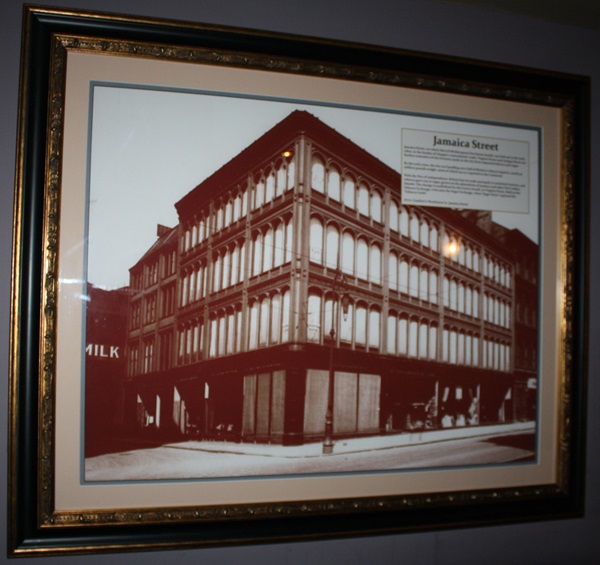
A modern print featuring an image of John Baird, with his building below.
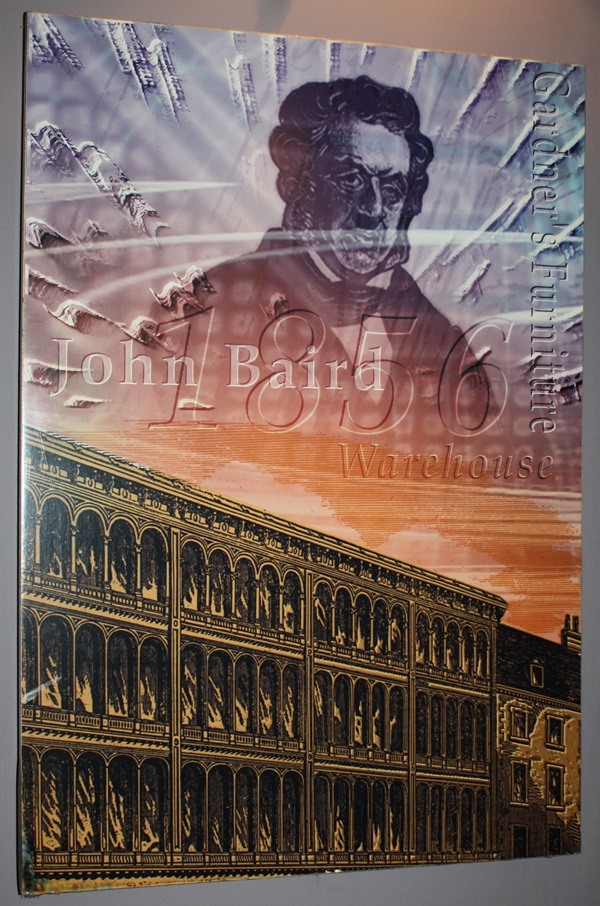
A modern print depicting a section of the building.
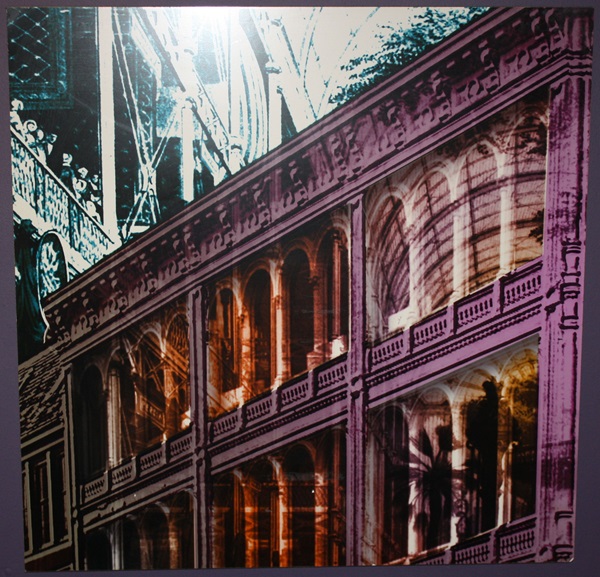
A modern print depicting a section of the building.
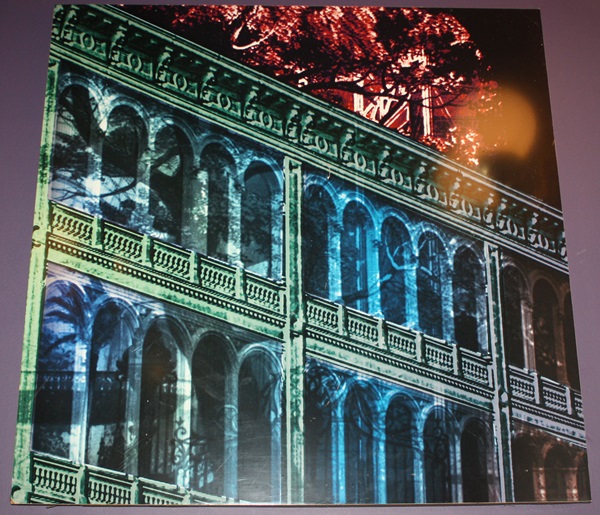
A modern print depicting the original Crystal Palace, in London’s Hyde Park, which served as John Baird’s inspiration for his design in Glasgow.
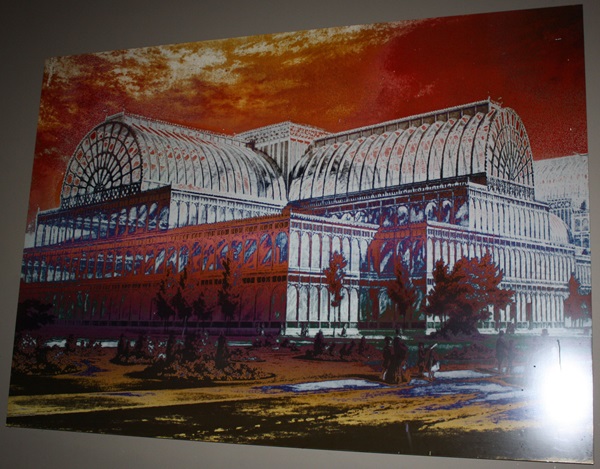
A framed illustration and text about Joseph Paxton.

The text reads: The iron and glass structure of the building now occupied by this J.D. Wetherspoon free house was inspired by Joseph Paxton’s famous Crystal Palace.
A pioneering departure from traditional building methods, the Crystal Palace was a huge greenhouse-like building, with over a quarter of a million paned of glass. The centre-piece of the Great Exhibition of 1851, it was 600 yards long and tall enough to enclose the mature trees of London’s Hyde Park.
Joseph Paxton was head gardener to the Duke of Devonshire at Chatsworth in Derbyshire. In the late 1830s, he designed a glasshouse at Chatsworth using ideas later incorporated in his Crystal Palace.
Iron framing had been used to construct fireproof factories since the late 1700s. Not long afterwards, English glassmakers adopted French technological innovation, and by the 1840s, large sheets of plate glass could be made. Paxton’s inspiration was to combine the two ideas into a structural whole.
The success of Paxton’s Crystal Palace earned him a knighthood, and £5,000 from the profits of the Exhibition. He later became MP for Coventry. Paxton also designed Glasgow’s West End Park – better known as Kelvingrove Park – and advised the layout of Queen’s Park.
Above: Joseph Paxton.
A framed photograph and text about The Broomielaw Bridge.
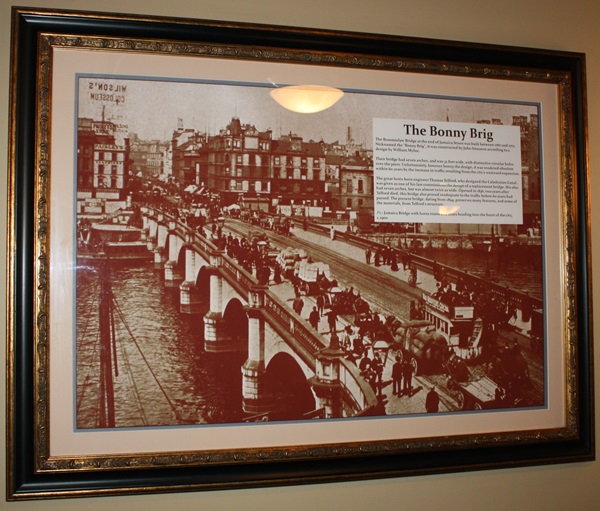
The text reads: The Broomielaw bridge at the end of Jamaica Street was built between 1767 and 1772. Nicknamed the “Bonny Brig”, it was constructed by John Smeaton according to a design by William Mylne.
Their bridge had seven arches, and was 32 feet wide, with distinctive circular holes over the piers. Unfortunately, however bonny the design, it was rendered obsolete within 60 years by the increase in traffic resulting from the city’s westward expansion.
The great Scots-born engineer Thomas Telford, who designed the Caledonian Canal, was given as one of his latest commissions the design of a replacement bridge. His also had seven arches, but was almost twice as wide. Opened in 1836, two years after Telford died, this bridge also proved inadequate to the traffic before 60 years had passed. The present bridge, dating from 1894, preserves many features, and some of the materials, from Telford’s structure.
Pictured: Jamaica Bridge with horse trams and drays heading into the heart of the city, c.1900’.
Framed photographs of spaces designed by Charles Rennie Mackintosh.
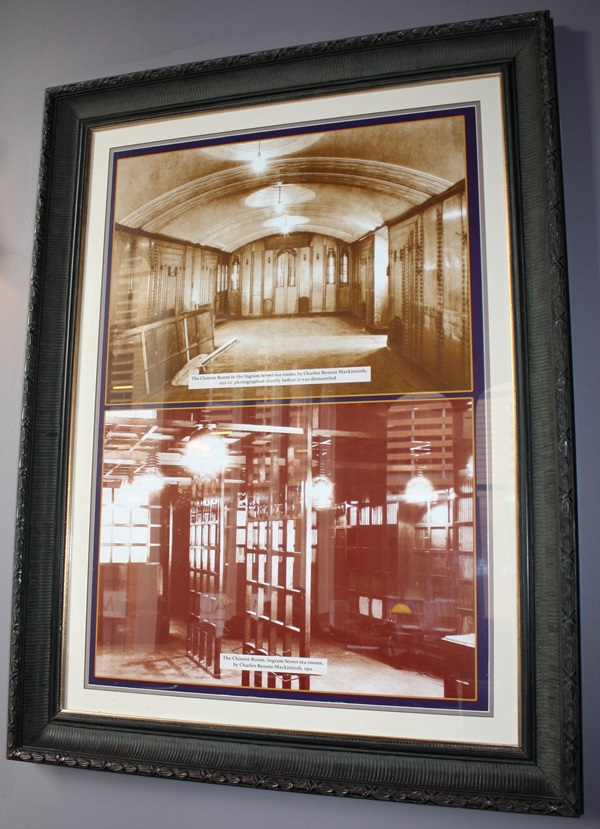
The photos are captioned: (Top) The Cloister Room in the Ingram Street tea rooms by Charles Rennie Mackintosh, 1911-12, photographed shortly before it was dismantled; (below) The Chinese Room, Ingram Street tea rooms, by Charles Rennie Mackintosh, 1911.
A framed collection of illustrations and photos recounting Charles Rennie and Margaret Macdonald Mackintosh and their work in art and design.
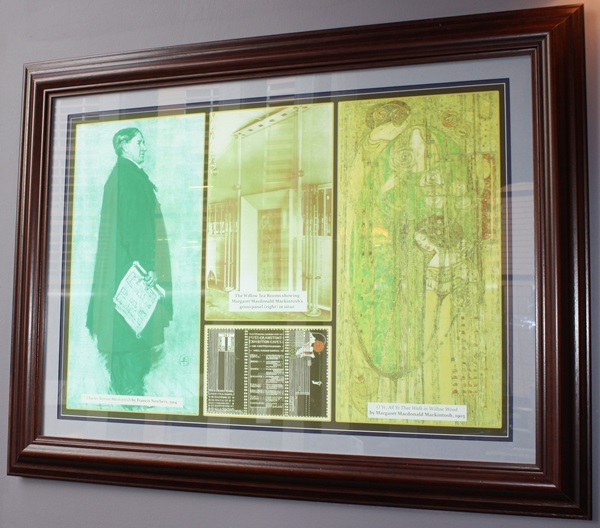
Images are captioned: (Left) Charles Rennie Mackintosh by Francis Newbery, 1914; (top middle) The Willow Tea Rooms showing Margaret Macdonald Mackintosh’s gesso panel (right) in situe; (right) O Ye, All Ye That Walk in Willow Wood by Margaret Macdonald Mackintosh, 1903.
Framed photographs and text about The Glasgow Girls.
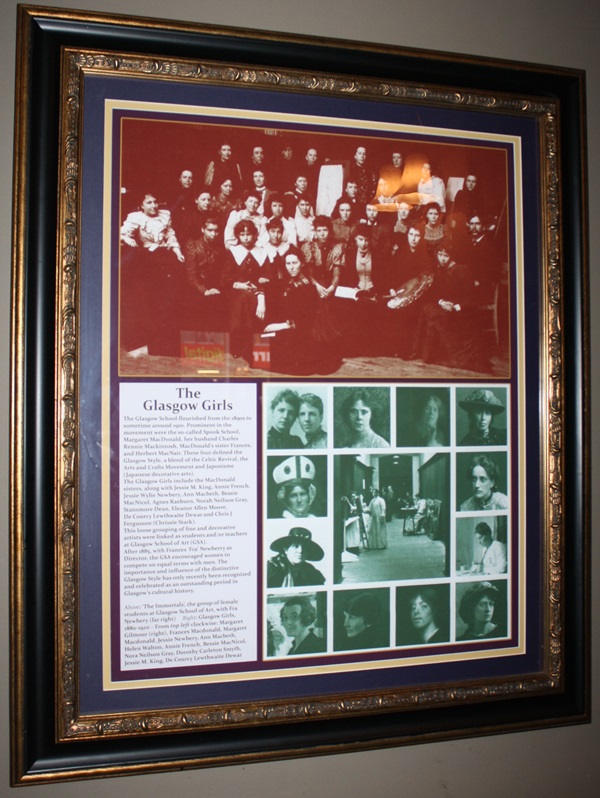
The text reads: The Glasgow School flourished from the 1890s to sometime around 1910. Prominent in the movement were the so-called Spook School, Margaret MacDonald, her husband Charles Rennie Mackintosh, MacDonald’s sister Frances, and Herbert MacNair. These four defined the Glasgow Style, a blend of the Celtic Revival, the Arts and Crafts movement and Japonisme (Japanese decorative arts).
The Glasgow Girls include the MacDonald sisters, along with Jessie M. King, Annie French, Jessie Wylie Newbery, Ann Macbeth, Bessie MacNical, Agnes Raeburn, Norah Neilson Gray, Stansmore Dean, Eleanor Allen Moore, De Courcy Lewthwaite Dewar and Chris J Fergusson (Chrissie Stark).
This loose grouping of fine and decorative artists were linked as students and/or teachers at Glasgow School of Art (GSA).
After 1885, with Frances ‘Fra’ Newberry as Director, the GSA encouraged women to compete on equal terms with men. Thhe importance and influence of the distinctive Glasgow Style has only recently been recognized and celebrated as an outstanding period in Glasgow’s cultural history.
A framed print entitled The Herd Boy, by EA Walton, 1886.
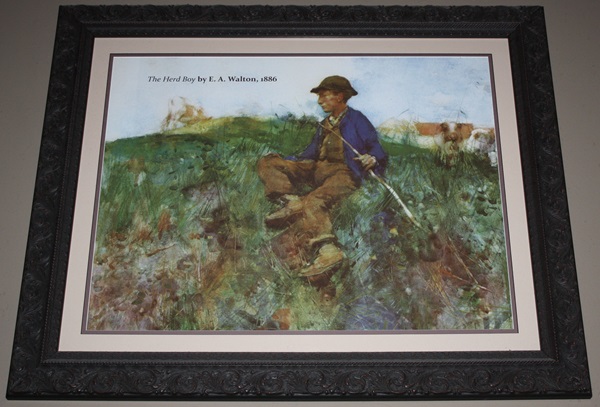
A framed print entitled Autumn, by Bessie MacNicol.
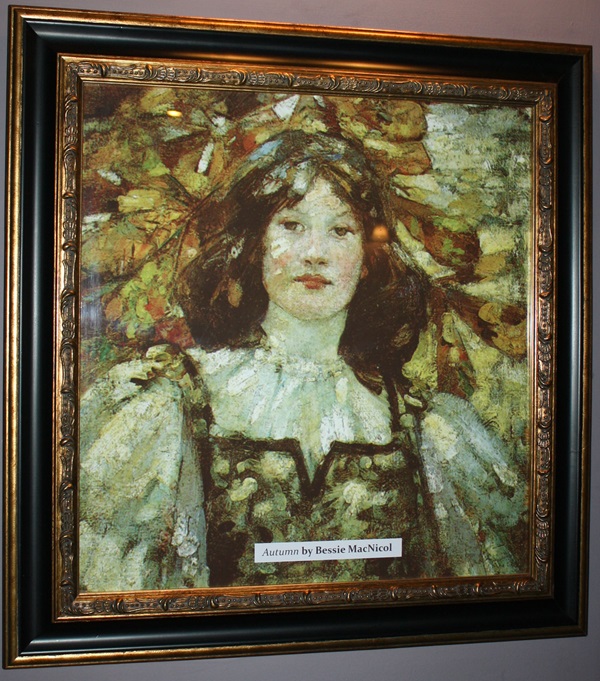
A framed print entitled Motherhood, by Bessie MacNicol, 1902.
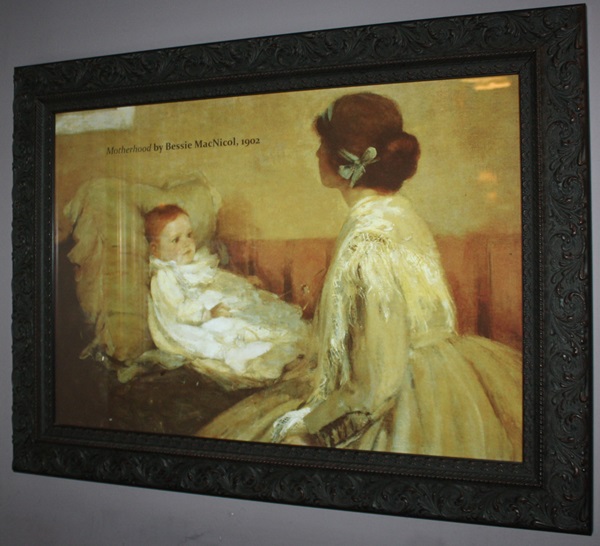
Framed prints of two works – A Girl of the Sixties, by Bessie MacNicol (1899) and Self-portrait, by Dorothy Carleton Smyth (1921).
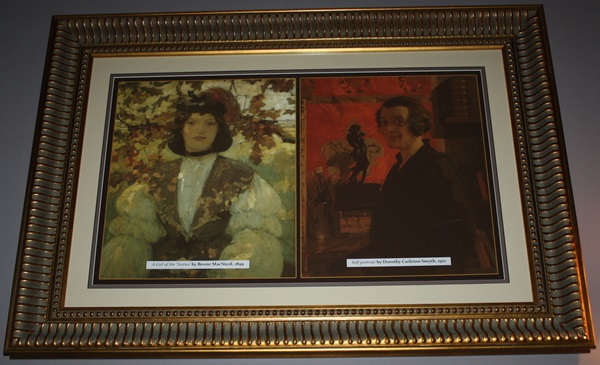
Framed photograph, illustration and text about Glasgow University.
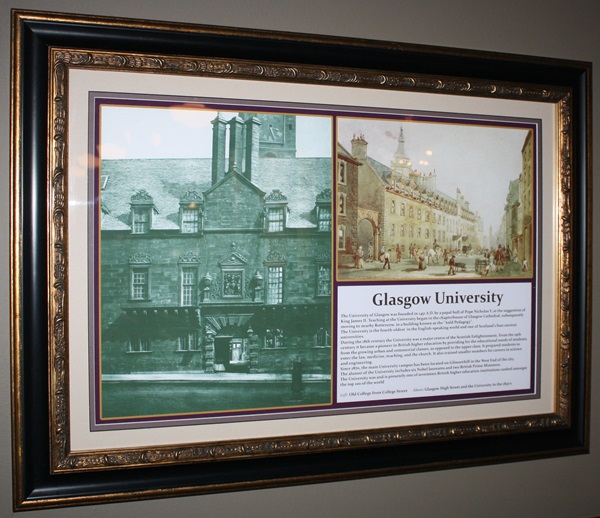
The text reads: The University of Glasgow was founded in 1451 A.D. by a papal bull of Pope Nicholas V, at the suggestion of King James II. Teaching at the University began in the chapterhouse of Glasgow Cathedral, subsequently moving to nearby Rottenrow, in a building known as the “Auld Pedagogy”.
The University is the fourth-oldest in the English-speaking world and one of Scotland’s four ancient universities.
During the 18th century the University was a major centre of the Scottish Enlightenment. From the 19th century it became a pioneer in British higher education by providing for the educational needs of students from the growing urban and commercial classes, as opposed to the upper class. It prepared students to enter the law, medicine, teaching, and the church. It also trained smaller numbers for careers in science and engineering.
Since 1870, the main University campus has been located on Gilmorehill in the west End of the city. The alumni of the University includes six Nobel laureates and two British Prime Ministers.
The University was and is presently one of seventeen British higher education institutions ranked amongst the top 100 of the world.
Left: Old College from College Street Above: Glasgow High Street and the University in the 1830’s.
A framed colour lithograph poster, by Agnes Middleton Raeburn.
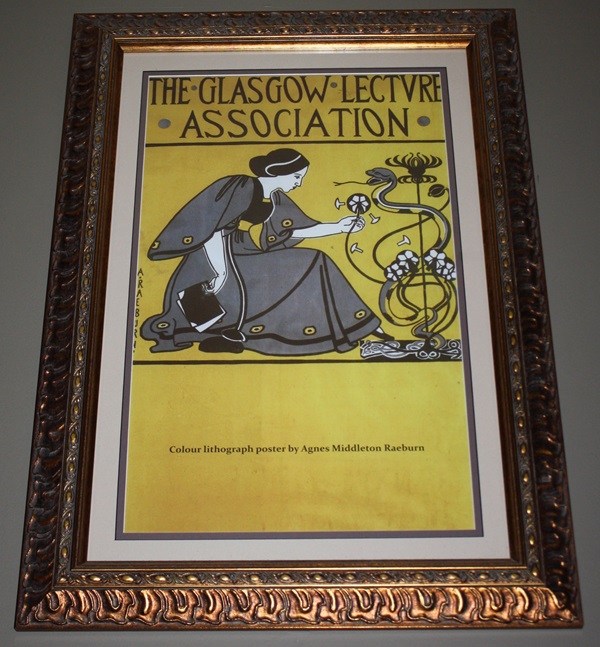
A framed print entitled The Belgian Refugee, by Norah Neilson Gray.
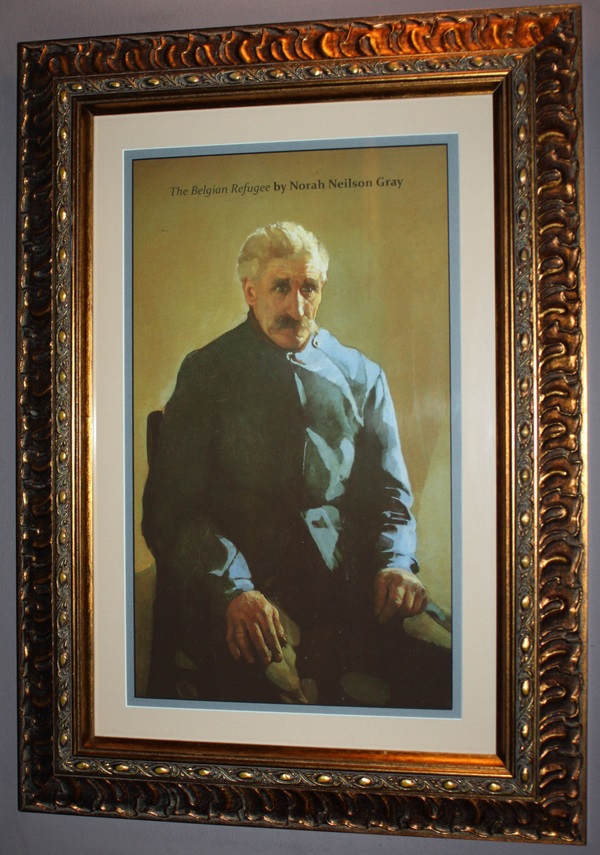
A framed photograph of the interior of The Hunterian Museum.
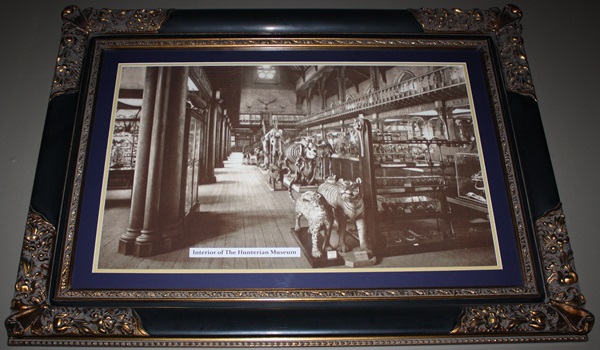
A framed illustration of the Glasgow Daily Herald offices, on Mitchell Street, drawn by Charles Rennie Mackintosh, 1894.
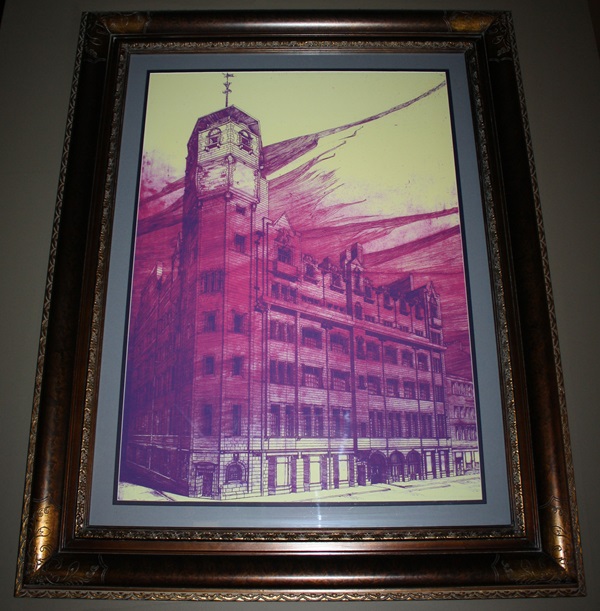
The text reads: The Glasgow Daily Herald is one of the world’s oldest continuously-published English-language newspapers. It was first published on Wednesday 1st January 1783 as the Glasgow Advertiser, from Duncan’s Land, Gibson’s Wynd. Its first editor was John Mennons.
In 1803 it became ‘The Herald and Advertiser and Commercial Chronicle’ changing to ‘The Glasgow Herald’ with its Thursday 26th August 1804 edition. It became a daily in 1859. In 1895, publication moved to the Charles Rennie Mackintosh building in
Mitchell Street. The building is now The Lighthouse, an architecture and design centre.
In 1964, publishers George Outram were bought by Sir Hugh Fraser. Ownership was then acquired in 1979 by Tiny Rowland’s Lonrho.
On 19 July 1980 the paper moved to offices in Albion Street, a black-fronted building
modelled after the Black Lubyanka building of the Daily Express in London’s Fleet
Street.
The paper became ‘The Herald’ on 3 February 1992.
The pub still bears the building’s original lift system – still used today.
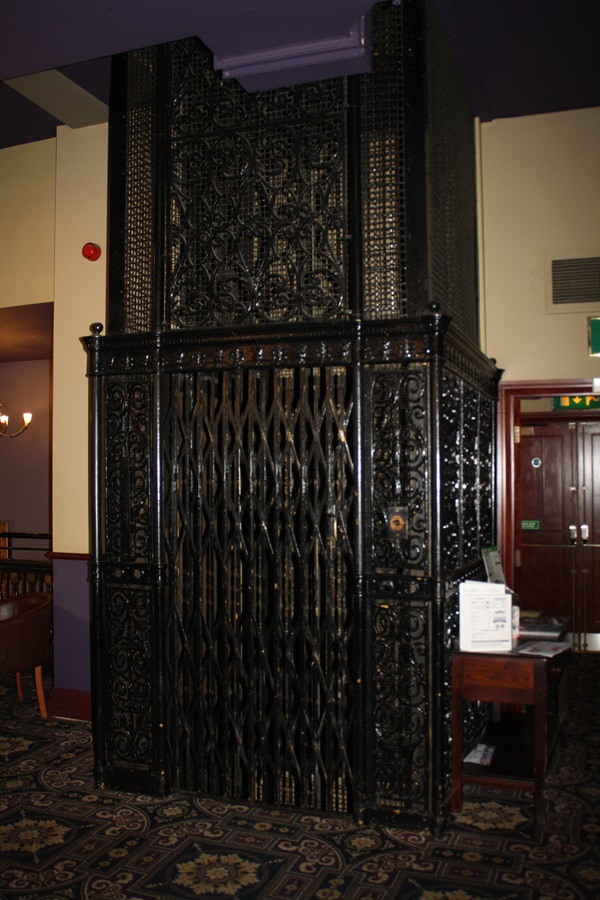
The lower entrance to the lift.
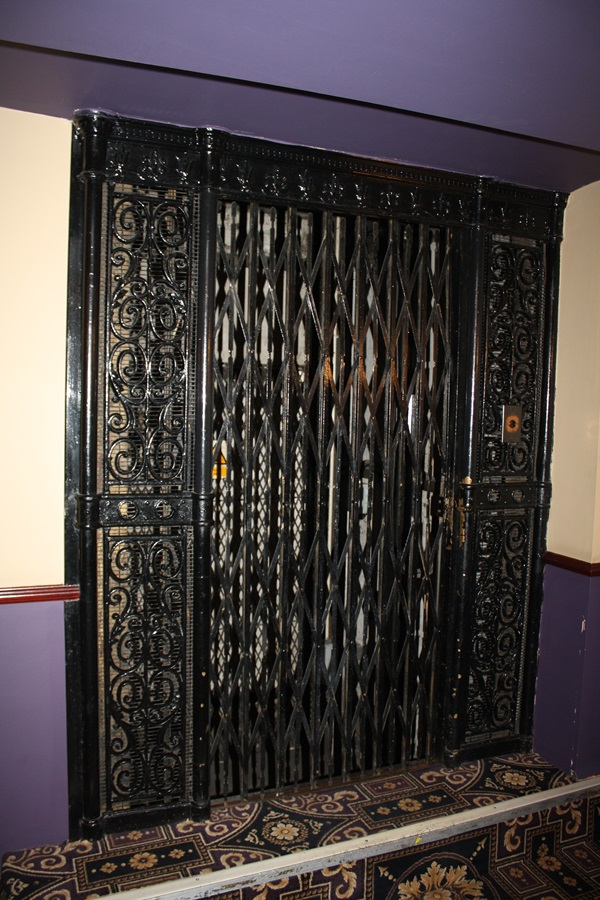
The lift’s call button.
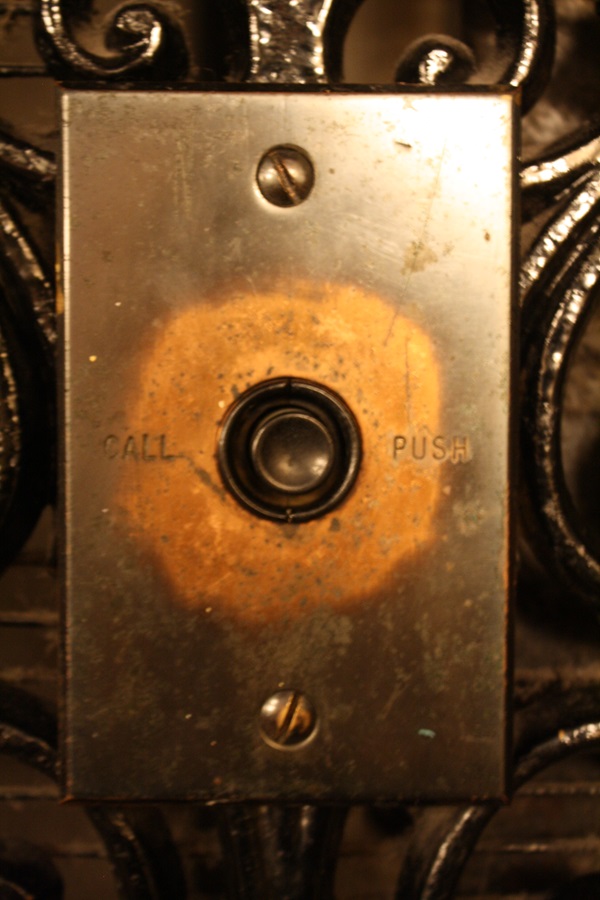
In addition to the lift, the building still features its original window arches – from John Baird’s original design.
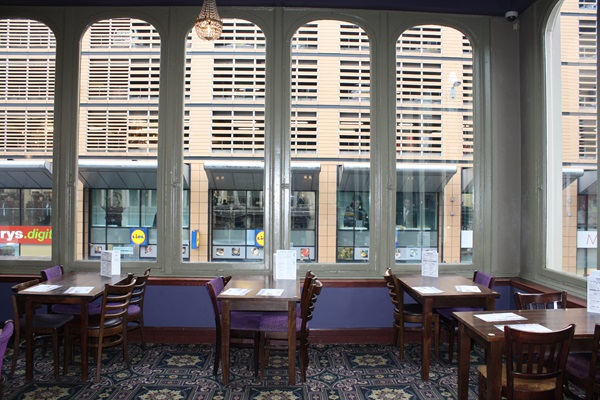
An external view of the front of the building which pays homage to A Gardner and Son, Cabinet Makers & Upholsters, who had originally used the building as a warehouse.
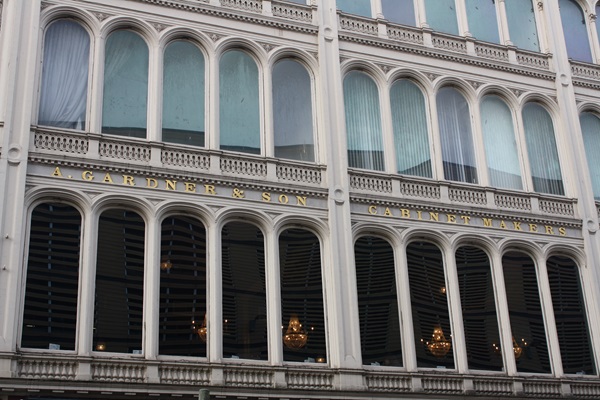
If you have information on the history of this pub, then we’d like you to share it with us. Please e-mail all information to: pubhistories@jdwetherspoon.co.uk